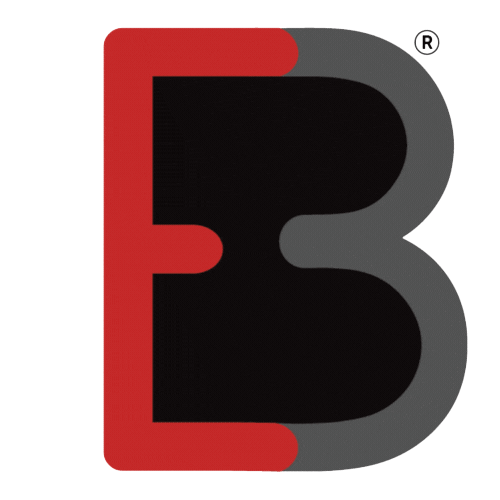Artificial Bone Market
Global Artificial Bone Market Size, By Material Type (Ceramics, Composite, Polymer, Hydroxyapatite, others), By Application (Spinal Fusion, Dental, Craniomaxillofacial, Joint Reconstruction, Trauma and Extremities), By End User (Hospitals, Specialty Clinics, Research Institutes, Others), Based On Region, And Segment Forecasts, 2024 – 2030
Global Artificial Bone Market: Global Size, Trends, Competitive, and Historical & Forecast Analysis, 2024-2030 The market is anticipated due to technological advancement, increasing focus on research and development, increasing prevalence of bone disorders and injuries, growing use of 3d printing technology.
Global Artificial Bone Market is valued at USD xx Billion in 2024 and it is expected to generate absolute dollar opportunity of USD xx Billion by 2030.
Scope of Global Artificial Bone Market
Artificial bone is a term used to describe bone-like material produced in a lab that can be used in bone transplants to replace human bone that has been lost because of serious fractures, illness, etc. According to recent studies, Hydroxyapatite (HA) nanocrystals are the optimal material for 3D printed prosthetic bones. Diammonium phosphate and calcium chloride are used as the phosphorus and calcium precursors, respectively, in the wet synthesis process to create HA nanocrystals. The material that is utilized most frequently is Bio-Oss. This synthetic bone is made from bovine (cattle) bone that has been sterilized and otherwise prepared for use as a bone substitute in people. This can be utilized alone, but more frequently it is combined with fragments or blocks of own bone.
COVID-19 Impact on the Artificial Bone Market.
The disease has expanded to over every nation around the world since the COVID-19 viral pandemic in December 2019, and on January 30, 2020, the World Health Organization proclaimed it to be a public health emergency. Three keyways that COVID-19 influenced the economy were through direct impact on drug supply and demand, interruptions in the distribution system, and financial effects on businesses and financial markets. The widespread implementation of lockdowns is making it difficult for several countries, including China, India, Saudi Arabia, the United Arab Emirates, Egypt, and others, to transport medications from one site to another.
The financial standing of companies across all sectors has been affected by the coronavirus (COVID-19) outbreak and lockdowns in numerous nations throughout the world. The private healthcare industry has been among the most severely impacted by the COVID-19 outbreak. Additionally, the market for artificial bones has been significantly impacted by the coronavirus pandemic in terms of development, manufacture, and supply. Governments and regulatory agencies from different nations are concentrating on putting various policies and programs into effect to slow down or stop the COVID-19 virus from spreading among people around the world.
Key Players of Artificial Bone Market Report-
Some of the Artificial Bone companies are Aditus Medical GmbH, Bando Chemical Industries Ltd., Baxter International Inc., Biomatlante SAS, Curasan Inc., Exabone GmbH, Graftys SA, HOYA Corp., Johnson and Johnson Services Inc., Koninklijke DSM NV, Maxigen Biotech Inc., Medtronic Plc, Nuvasive Inc., Orthofix Medical Inc., Smith and Nephew Plc, and others.
What significant has happened recently in Artificial Bone market
Opus BA, a Bioactive Solution for Spine Procedures, is a new offering from Orthofix that broadens its selection of artificial bone growth products.
On February 22, 2022, Orthofix Medical Inc., a prominent medical device company specializing in spine and orthopedic treatments, has announced the market debut of Opus BA, a synthetic bioactive bone graft solution designed for cervical and lumbar spine fusion procedures.
Market Analysis
Increasing Prevalence of Bone Disorders and Injuries are Drive the Market Growth.
One of the main factors propelling the growth of the global artificial bone market is the rising prevalence of bone illnesses and injuries. The aging population, changes in lifestyle, and sports-related injuries all have a significant role in the rising prevalence of bone-related disorders. Among the frequent bone injuries are those brought on by trauma, mishaps, or falls. About 10 million Americans suffer from osteoporosis, and an additional 44 million have inadequate bone density, which puts them at risk for bone fractures. One of the most prevalent orthopedic issues is fractures. In the US, physicians repair over 6.8 million fractures annually. Over their lifetime, the average individual should anticipate suffering two fractures. Bone grafts and substitutes, which are among the most popular artificial bone implants, are essential for stabilizing fractures and offering the necessary assistance for bone repair. Hence, during the forecast period, the worldwide artificial bone market is anticipated to rise because of the increasing prevalence of these disorders.
Growing Use of 3D Printing Technology Boosts Market Growth.
The global artificial bone market is primarily driven by the innovation of emerging technologies and their expanding usage, such as 3D printing technology in bone implants. as the 3D bone producer MyBone, which was approved in Europe in 2022. Thanks to the development of MyBone, the first patient-specific 3D-printed bone implant, surgeons in Europe can now cure patients with severe facial deformities. The primary element found in natural bone is called hydroxyapatite, which is a calcium phosphate.
Furthermore, the expanding use of 3D printing technology, also known as additive manufacturing, which enables the precise fabrication of patient-specific implants and structures with complex geometries customized to meet unique anatomical requirements, is one of the major advancements in the artificial bone industry. Besides, American startup ArcomedLab was established in 2018. They are global leaders in the development of technology, with a focus on PEEK biopolymer-based 3D printing of personalized synthetic bone implants for each patient. Over 600 implants have been successfully placed across LATAM thus far. Additionally, with this technology, personalized implants can be created to exactly fit the anatomy of a patient. The implant, which is created using 3D printing, has a better fit and a lower risk of implant-related problems since it is made using precise patient-specific imaging data. Therefore, during the forecast period, these cutting-edge features are anticipated to fuel the expansion of the worldwide artificial bone market..
The Limited Osteogenic Potential and Low Mechanical Strength of Artificial Bone Materials Hampered the Market Growth.
The market growth of the global artificial bone market is hindered by the limited osteogenic potential and low mechanical strength of artificial bone materials. These shortcomings impede the effectiveness of artificial bone materials in various surgical procedures and bone fractures. For instance, as report published by the U.S. National Library of Medicine in June 2020, the utilization of synthetic materials such as ceramics, composites, and polymers in bone surgeries presents several drawbacks. These include a faster rate of reabsorption, leading to decreased mechanical strength, as well as diminished osteoinductive or osteogenic properties. These limitations underscore the challenges facing the artificial bone market in meeting the demands of patients and healthcare professionals for effective bone replacement and augmentation solutions.
Geography Analysis-
Increasing Focus on Research and Development is Drive the Artificial Bone Market Growth in North America.
sophisticated healthcare system in the area, and the presence of major companies in the industry. As a result, the growing need for bone grafts and alternatives to orthopedic operations such as joint reconstruction surgeries and spinal fusions propels market expansion. In the United States, approximately 800 thousand complete knee replacements and 500 thousand total hip replacements are performed annually. The market for enhanced bone grafts in North America is expanding rapidly due to a rise in bone abnormalities and advancements in surgical procedures.
The US has a strong infrastructure for health care and does a lot of research. The increasing prevalence of osteoporosis and arthritis, the rising number of knee and hip replacement procedures, and technological advancements in bone graft materials are driving market expansion. As healthcare investments rise and people gain more knowledge about bone graft procedures, Canada also exhibits positive growth in the augmented bone graft market.
Technological Advancement in Artificial Bone Market in Asia Pacific Boosts the Market Growth.
The increased use of minimally invasive techniques for joint reconstruction, fusion surgeries, and fractures is one of the key reasons for the huge rise of the worldwide artificial bone market in Asia Pacific. The region's market is expanding rapidly because of factors including the rising frequency of orthopedic ailments and the rising number of orthopedic procedures. Furthermore, the expansion of the global artificial bone market is anticipated to be fueled by an increase in patients as well-known, established companies that specialize in the production of highly biocompatible artificial bone. For instance, Granulab (M) Sdn Bhd, a subsidiary of KPower Bhd with a 70% ownership stake, has introduced Prosteomax, the Malaysia first synthetic bone cement with halal certification. Prosteomax is a cutting-edge calcium phosphate-based synthetic bone cement that has been approved as halal for use in orthopaedic, cranial, dental, and maxillofacial applications by the (Jakim), a division of the Malaysian Islamic Development Department, and the Malaysian Medical Device Authority.
What you can gain from Artificial Bone Market Report–
- Provides an in-depth analysis of the dynamics of Artificial Bone segments across various regions.
- Artificial Bone segment research report provides detailed information about Market Introduction, Market Summary, Global market Revenue (Revenue USD), Market Drivers, Market Restraints, Market Opportunities, Competitive Analysis, and Regional and Country Level.
- The Artificial Bone Segment Market report covers extensive analysis of emerging trends and the competitive landscape.
- The Artificial Bone segment report helps to identify opportunities in the marketplace.
Global Artificial Bone Market Segmentation
By Material Type:
- Ceramics
- Composite
- Polymer
- Hydroxyapatite
- others
By Application:
- Spinal Fusion
- Dental
- Craniomaxillofacial
- Joint Reconstruction
- Trauma and Extremities
By End User:
- Hospitals
- Specialty Clinics
- Research Institutes
- Others
By Regional & Country Level:
- North America
- S.
- Canada
- Europe
- K.
- France
- Germany
- Italy
- Asia Pacific
- China
- Japan
- India
- Southeast Asia
- Latin America
- Brazil
- Mexico
- Middle East and Africa
- GCC
- Africa
- Rest of Middle East and Africa
Segments
Global Artificial Bone Market Segmentation
By Material Type:
- Ceramics
- Composite
- Polymer
- Hydroxyapatite
- others
By Application:
- Spinal Fusion
- Dental
- Craniomaxillofacial
- Joint Reconstruction
- Trauma and Extremities
By End User:
- Hospitals
- Specialty Clinics
- Research Institutes
- Others
Regions and Country
North America
- U.S.
- Canada
Europe
- Germany
- France
- U.K.
- Italy
- Spain
- Sweden
- Netherlands
- Turkey
- Switzerland
- Belgium
- Rest of Europe
Asia-Pacific
- South Korea
- Japan
- China
- India
- Australia
- Philippines
- Singapore
- Malaysia
- Thailand
- Indonesia
- Rest of APAC
Latin America
- Mexico
- Colombia
- Brazil
- Argentina
- Peru
- Rest of South America
Middle East and Africa
- Saudi Arabia
- UAE
- Egypt
- South Africa
- Rest of MEA
Key Players
Key Players of Artificial Bone Market Report-
- Aditus Medical GmbH
- Bando Chemical Industries Ltd.
- Baxter International Inc.
- Biomatlante SAS
- Curasan Inc.
- Exabone GmbH
- Graftys SA
- HOYA Corp.
- Johnson and Johnson Services Inc.
- Koninklijke DSM NV
- Maxigen Biotech Inc.
- Medtronic Plc
- Nuvasive Inc.
- Orthofix Medical Inc.
- Smith and Nephew Plc
+44-1173181773
sales@brandessenceresearch.com
We are always looking to hire talented individuals with equal and extraordinary proportions of industry expertise, problem solving ability and inclination interested? please email us hr@brandessenceresearch.com
JOIN USFIND ASSISTANCE
LONDON OFFICE
BrandEssence® Market Research and Consulting Pvt ltd.
124, City Road, London EC1V 2NX
FOLLOW US
© Copyright 2025-26 BrandEssence® Market Research and Consulting Pvt ltd. All Rights Reserved | Designed by BrandEssence®




